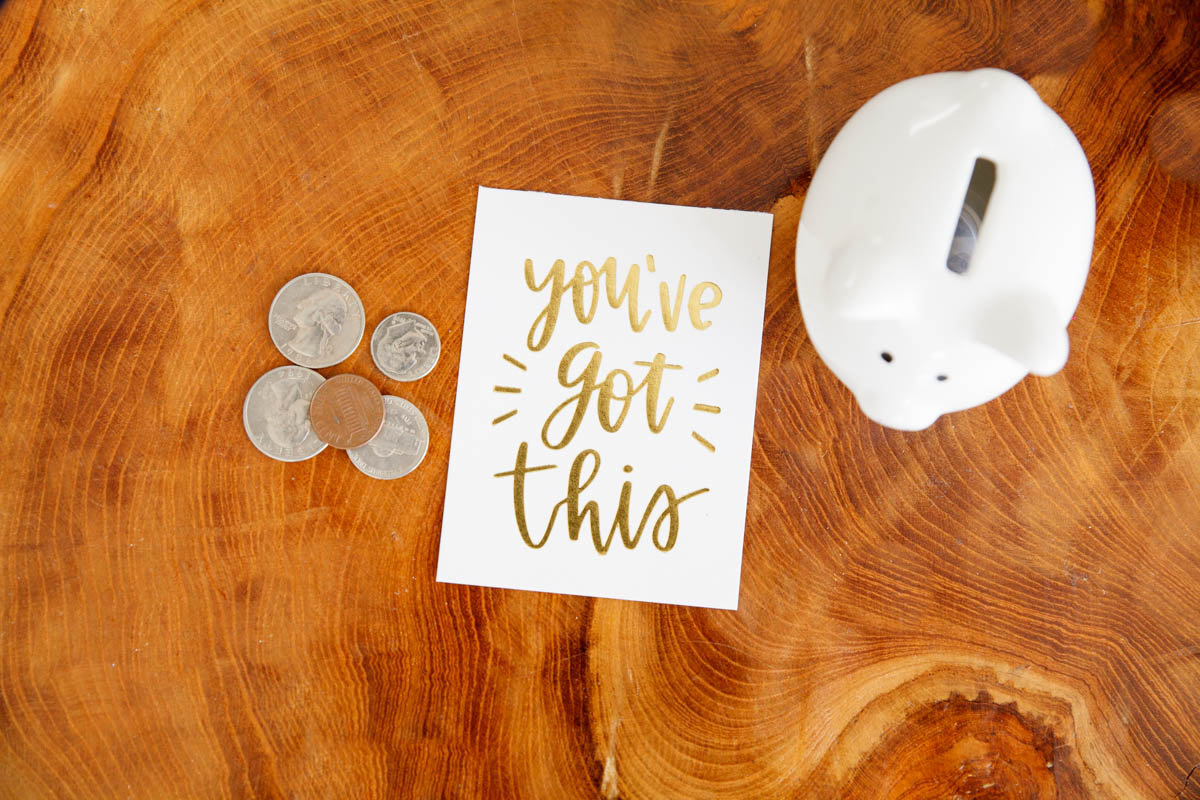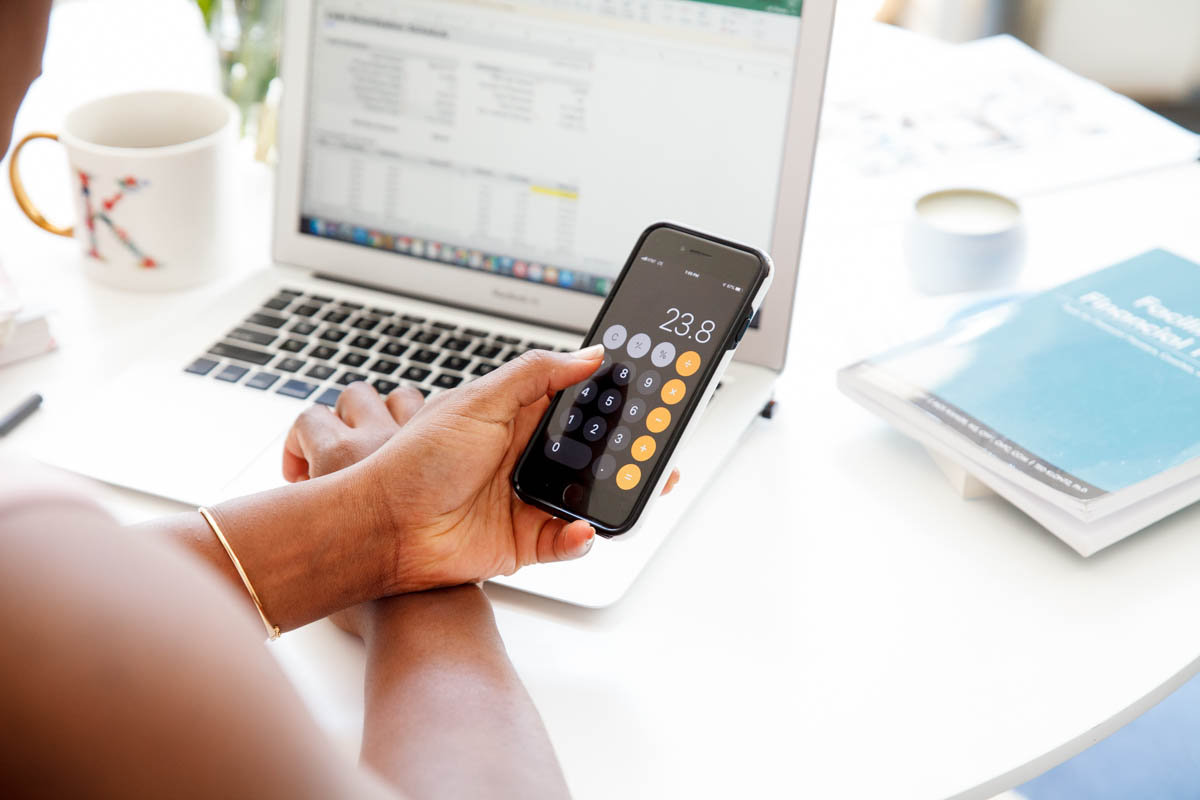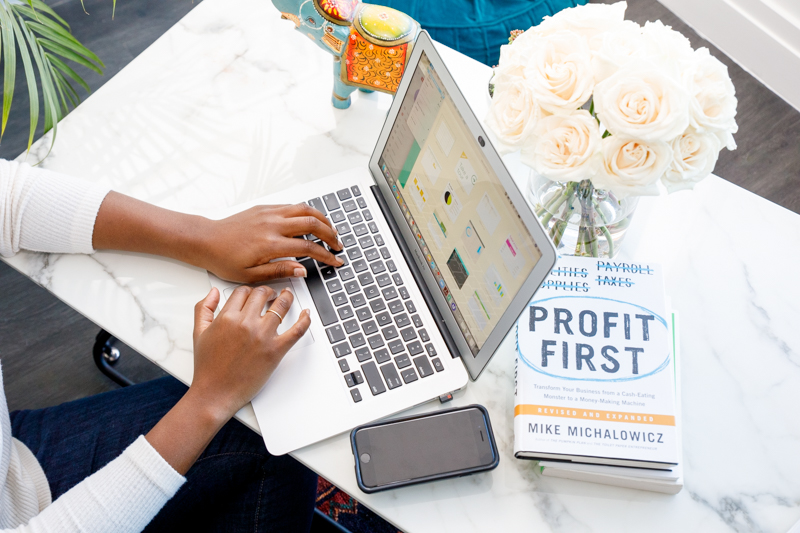Better financial well-being starts with identifying spending patterns. Tracking bills in an app is a start, but those apps aren’t showing you a complete picture of your finances. A financial coach can help you find patterns in your finances so you can take a holistic approach to managing money.
Financial patterns are day-to-day data of your spending. Your bank account tells a unique story, from simple costs like tolls and Starbucks to significant expenses like bills. As a financial coach, I use this data to create a realistic budget and make spending easier.
Financial patterns aren’t about restriction. Understanding what you spend money on gives you clarity and control. Learn how to turn your budget into a tool, build financial confidence, and achieve money goals faster by discovering your financial patterns.
Stay tuned for insights on these topics:
- [02:21] Intro to financial patterns
- [03:27] Aligning your actual spending and your budget
- [04:10] Client example
- [10:15] Financial patterns are more than bills
- [11:58] Identifying simple costs
- [16:24] Avoiding fake math
Tune into this episode of Money Files to learn how financial patterns shape your budget and spending plan.
Are you ready to start asking for help with your finances? Apply to work with me, and let’s start working towards your financial goals.
If you loved this conversation on how financial patterns can help shape your budget, check out my episode on How To Take Control Of Your Spending!
Transcript for “How Financial Patterns Can Help Shape Your Budget”
Intro: Hi and welcome to Money Files. I’m Keina Newell from Wealth Over Now I work everyday with professional women and solopreneurs to help them get out of financial overwhelm and shame so they can experience more flexibility and ease with their finances. Are you ready to gain confidence and learn to manage your finances intentionally? Tune in and grab financial tips that will help you master the way you think about and manage your finances.
Keina: Hello and welcome back to another episode of Money Files. I enjoy talking to you guys every single week and I thank you so much. If you’ve been tuning into my podcast for this your first episode, if you listen to me every week, I just want to say thank you. I don’t take it lightly that you are spending your time with me. I know how important airtime can be and so for me to be in your ears. Thank you. I appreciate you. And if you haven’t done so already and you enjoy my podcast, I’d appreciate it if you would share on social media, tag me and also leave a review on Apple or Spotify. I love reading reviews and it helps me feel really connected to my work. I am definitely a heart-centered entrepreneur and I enjoy knowing how much these episodes impact your lives. So today I actually want to talk to you about what I think my superpower is as a coach and how coaching really is different than tracking your money in an app.
And I say tracking your money in an app because that’s what I believe apps do. Sometimes people will come to me and they’re like, Keina, I don’t want to use a spreadsheet, or I really want to use something, like, technical, I want an app. And I’m not, like, anti-app. I do really love my spreadsheet, but there’s a human component that you are not going to get through an app. And I would even say like even necessarily the spreadsheet could also be something that you’re just using as tracking if you don’t have the right mindset that goes along with it. And so the thing that I actually want to talk to you about today is what I call, like, financial patterns. So if you decide to work with me, I am all in your business. I know the ins and outs of your numbers.
I am not just helping you make a budget. We are opening up credit card accounts, we are opening up bank statements and not even bank statements. I should say we are looking at your actual banking account from week to week. And some of my clients, they’re like, oh my God, Keina’s going to judge me for what I’ve spent on. And I’m like, girl, I’m not looking at what you spent on, like if anything, I’m going to have a conversation with you about what you bought at Target. But the number one thing that I am looking for when I look at your credit card statements and when I look at your banking account is I am looking for patterns. Financial patterns are the number one thing I use as a coach to get my clients’ results. Because there is the plan that we put in place, the budget that we put in place that says like, here’s how I want to spend money.
And then there is how you actually spend money. And I want to make sure that your plan or your budget reflects how you’re actually spending money. And there are different types of patterns. There are patterns that happen daily, there are patterns that happen weekly, there are patterns that happen monthly, quarterly, or annually. But for me, your spending allows me to pick up on the patterns in your life. And if I can pick up on the patterns in your life as your coach, I can explain them to you and I can say like, hey, here’s what I see happening in your bank account. Does this feel right to you? Just helping you analyze your own spending, which ultimately is going to help you feel more in control of your money.
You’re not going to feel like things are just happening to you. One of, like, the recent examples that I have of that is one of my clients, she was telling me like, oh my goodness, Keina, I feel like I need to set aside more money for groceries and I need to set aside more money for eating out. And she already had, I want to say close to, like, a thousand dollars or a couple hundred dollars, definitely more than a couple hundred, like $800, $900 that she was using for eating out. And so I said, let’s actually, like, look at your numbers. And so we looked at all of her purchases over the last several weeks and the pattern that we actually picked up on was that she had been spending a lot of money at Starbucks.
And let me put a disclaimer on this. I am not villainizing you getting a coffee, but what was happening is that she was spending several hundred dollars at Starbucks, like her app was like auto refilling at like $50 a pop. And it was something that she was unaware of. And when I say unaware of like she was just taking it out of her eating out budget, like it was just something that she does. It’s a pattern that she has. And so by me going in and actually looking and being like, oh, look at how much you’re actually spending at Starbucks, let’s actually talk about whether or not you want to spend that much at Starbucks. So I meant to pull the number for you guys before I got on this podcast and I totally forgot, but let’s just say, and it was a couple hundred bucks. I want to say she was spending at least $200 a month at Starbucks.
And so if she was looking at her eating out budget and if her eating out budget was only $500 for the month and $200 is going towards Starbucks, like we started to ask questions like, is this actually how you want to spend your money? Are you in agreement with the fact that you want to spend this much at Starbucks? Or is this just a habit and pattern that you’ve built over time that you maybe actually want to reevaluate? And so these questions that we’re able to ask by identifying patterns also allow us to go in and look at your finances in a non-judgmental way. I was by no means telling her like, you can’t have Starbucks. She technically can afford to have Starbucks. But the question is, do you like how you’re spending money at Starbucks.
And if you look at this $200 a month that you’re spending and it’s $2,400 for the year, like at the end of the year, do you want to say that you spent $2,400 for the year at Starbucks? Like how are you going to feel about that? And so as we started to kind of like dive in once again in a non-judgmental way about the Starbucks, we started talking about how she goes with another neighbor and they walk to Starbucks. They do that a couple of times a week. When she goes, she usually orders a drink and she gets some breakfast. It’s something that she actually likes to do on weekends. So we started to also nail down, when do you actually want to buy a drink at Starbucks? Do you just actually like to go on the walk with your neighbor? Can your neighbor buy Starbucks and you not buy Starbucks? Like are there sometimes that it’s just a matter of like, it’s something quick for you, but just starting to shift her overall habits based off of us having awareness from her financial patterns.
And she also has an espresso machine at home. I was like, girl, just like buy an espresso, like, pod subscription. See if you can just test out having coffee at home and then on the weekends or whatever, if you want to buy, like, coffee at Starbucks, go ahead and do that. But knowing her financial patterns and being able to help her identify her financial patterns also allowed us to address the right problem. Because at first, as I’m listening to her tell me like Keina, I just keep going over and eating out. I’m like, well, let’s actually look at how much money you actually have to spend overall on food, like with groceries and eating out and let’s make sure we’re problem solving for the right thing.
Is it that we actually didn’t set aside enough for you to eat out or is there a leaky bucket somewhere when we’re looking at how you’re eating out and do you agree with how you’re eating out? So this may be something too that you’re experiencing where you feel like I’m always going over budget in this area of my life. And you might be tempted to say, like, oh my goodness, I just need more money to spend in this area. And sometimes that’s true, like I have clients where I’m like, $200 a month on groceries is not getting you anywhere. Like that’s a lie. But when I have a client who may be spending a thousand dollars a month on groceries, we may take a step back and say like, okay, let’s actually look at what’s happening with your groceries.
Is there something else in here that we need to plan for that we’re not being thoughtful about? Is there maybe, if we’re categorizing everything as groceries, but it’s really like I buy groceries and household products, do we need to actually split that out for you mentally? But being able to look at your patterns and then ask yourself non-judgmental questions, but just asking yourself curious questions about your own actual spending will allow you to settle into a budget that you actually love. The reason you don’t like budgeting is because you think budgeting is all about restriction. And I would agree that that’s the way that it’s taught in our society, that it’s like you need to be saving money. You can’t have credit card debt, you shouldn’t be spending money on this if you’re in debt, like those are the things that are kind of barked in our society about budgeting.
And so after you start making a certain amount of money, you stop budgeting because you feel like you make too much money to be on a budget. And so then you just go and spend money in whatever way you desire and you are not necessarily getting the results that you want, which is to, like, feel in control of how you manage your money from month to month. And so as you know I love a good budget, but with that budget, I also want to pair it with your financial patterns and being able to pay attention to your financial patterns. It’s also paying attention to other things besides just your bills. That is the number one thing that I see when it comes to budgeting is that people, when they think about budgeting, they only think about taking care of their bills and bills are important. I want you to have food, I want you to have shelter, like those are important, but I also want you to pay attention to the other areas of your life that you want to invest in, the areas of your life that bring you joy.
Like if you are a person that likes to buy gifts, or if you are someone who likes to travel, or I think I spend a lot of money on health and fitness and so it’s being able to think about, what are these other things that I want to spend money on? And what are the patterns in my life that I want to be able to capture in my budget? One of my philosophies when it comes to budgeting is that your budgeting is like a working document. It is a tool. It should not be static. My clients don’t have a budget that just sits in a Google spreadsheet and it’s never touched again. Like that’s not, no, because you do so much life day to day and month to month, I need your budget to be responsive to you and what you have going on. And so when I am going through client’s numbers and looking for the patterns, that’s what allows your budget to be able to have this flexibility, where something can unexpectedly happen, but you still feel like you have the money for it.
Another financial pattern that I’ve picked up on and like we’ll talk about with you is there are simple things that you’re spending money on that matter. And if you find yourself saying like, oh, I’ll just figure it out, or like, oh, no, no, no, that’s not that much money. It may not be “that much money,” but the simple things matter in your overall picture. I have lots of clients, especially in the DMV area that use tolls. And if you are not in the DMV, that means DC, Maryland, and Virginia. I’m from Oklahoma, and the DMV is where you get your driver’s license. But here it’s talking about three areas you can live in. So in this area we have tolls and the tolls guys they can be anywhere from $2 to $20 to $30, but I actually worked with a couple and the husband would commute to work and in commuting to work, he would pay for tolls. And they had, I want to say maybe like in the beginning, they maybe estimated like that they spent 2 to $300 on tolls.
And as I was going through week to week and helping them actually actively update their budget, that number was closer to like 4 and $500 a month that he was spending on tolls. So if we don’t catch the pattern of the spending and we’re just going over the like, oh, we only spend $300 on tolls because that’s the number that it’s our guesstimate. When you first budget, you give yourself a guesstimate. If we only go on with that number, that means that from any given month, they are going to short themselves 100 to $200 a month that’s actually spent on tolls. And what that’s going to create for them is that every single month they’re going to feel like, dang, why do I feel like I don’t have money for saving or why don’t I feel like I don’t have money for groceries?
And in the first month, that may not happen, because you can just write it off and say like, oh, it’s just $100, but the next month it’s $200. The next month it’s $300 that you’ve had as a cumulative loss over time because you don’t actually have an understanding of your own spending patterns. And so once we identified like, hey, let’s actually look at your tolls, let’s look at some past data about your tolls and let’s get a more realistic number and put this in your budget so that you can pay tolls with ease. Once again, paying your tolls is a very simple thing. Auto refilling at $100, $200, it’s very simple. And you’re right. I don’t want you to being like, oh my goodness, can I afford tolls. That’s not what we’re talking about. But when we understand the impact of the tolls on your overall vision for yourself and the overall big picture, if you know I’m spending $500 a month on tolls, that is a number that I want you to know because it’s going to also allow you to think like, I mean with this couple I talked about like, hey, are there any subsidies from work?
Like sometimes part of your compensation package could be that there is money that your company gives you for transportation to and from work. So we just started to ask different questions. We started to think about his remote schedule and when would he actually go into work or even looking at the time of day he wanted to go into work because $500 a month on tolls is also a car payment. And we just started to rethink like, is there a better way? Or is this just a $500 cost that we just need to assume, put it into the budget and we’ll be okay? And that helped them have peace of mind about how much money they could actually save consistently each month. They also had peace of mind about how much money they could be putting towards their debt, and they had peace of mind about how much money they could actually spend each and every month because they had a clearer picture because we had identified their financial patterns around these tolls.
And so, the Starbucks, the tolls, those are just two examples, but identifying your financial patterns is, I don’t think you’re going to find this in a book anywhere, but it is one of the things that I think is imperative for you to feel really confident with your numbers. It also is going to help you not do fake math. Fake math is like you making the best guesstimate that you can in that moment to identify how much money you spend on something. But then after you make that guesstimation, we want to follow it up with actually looking at your patterns. What are we learning in your day-to-day data about your spending. Have you actually realized that from week to week you spend a lot of money eating out or did you realize like, oh, I actually have, I’m looking back on this quarter and I realized that in this quarter there were a lot of birthdays and so I hadn’t really thought about those birthdays and so I want to make sure that I beef up my, birthday funds or maybe you notice that there are annual fees or annual maintenance costs.
Like summertime right now, a lot of my clients, I’m like, hey, tell me about your landscaping because it’s just something that you don’t necessarily think about, but it is a financial pattern that you have in your life. So your financial patterns could be day to day that you’re observing. They can be week to week, they could be monthly, they could be quarterly, and they can be annually. And so I am looking as a coach, like I’m looking across that spread. It’s actually why I love working with clients for five months because we’re able to catch a number of different patterns and actually help people adjust their budgets over time and really be able to build that muscle so that they feel like they have this budget as a tool that makes spending easier for them. So yes, patterns and patterns are not something that you are going to get like I said, in an app.
You want to actually sit down and make a budget and then if you want to put it into an app that’s on you. But I want you to be in control. Don’t outsource your financial responsibility to your paycheck and don’t outsource your financial responsibility to your app. So thank you so much for tuning in. If you are listening and you’re like, oh my goodness, Keina, look, I need you to be all of my business and tell me where my money needs to go so I can actually understand my own patterns and I want to change the experience that I’ve been having with your finances or with my finances. And so I would invite you to apply to work with me in my five month coaching partnership. If you go to my show notes, you can find the link to book a call, or you can go to my website@wealthovernow.com and at the top it says, book a call.
But I would love to work with you for five months and if you start working with me like at this point, this year, we get to finish out summer, we get to identify all your financial patterns in the summer, which is going to make next summer even better. It’s going to help you in this summer not feeling like you’re in the hole and it’s going to make next summer better. But we’re also going to, if you have kids, we can prepare for going back to school. We can start preparing for the holidays, but making sure that in 2025 you are not putting the resolution, start budgeting or paying off debt in your list of resolutions. We don’t need to do that. We can just make everything better this year and we can work together in my five month partnership. So if that’s you, I look forward to seeing you on a Zoom call very soon for a consult with me. And until next time, I will talk to you later. Bye.
Outro: Thank you so much for listening to Money Files. If you’re ready to take the next step to reach your financial goals, head to www.wealthovernow.com/appointment and let’s get started.



